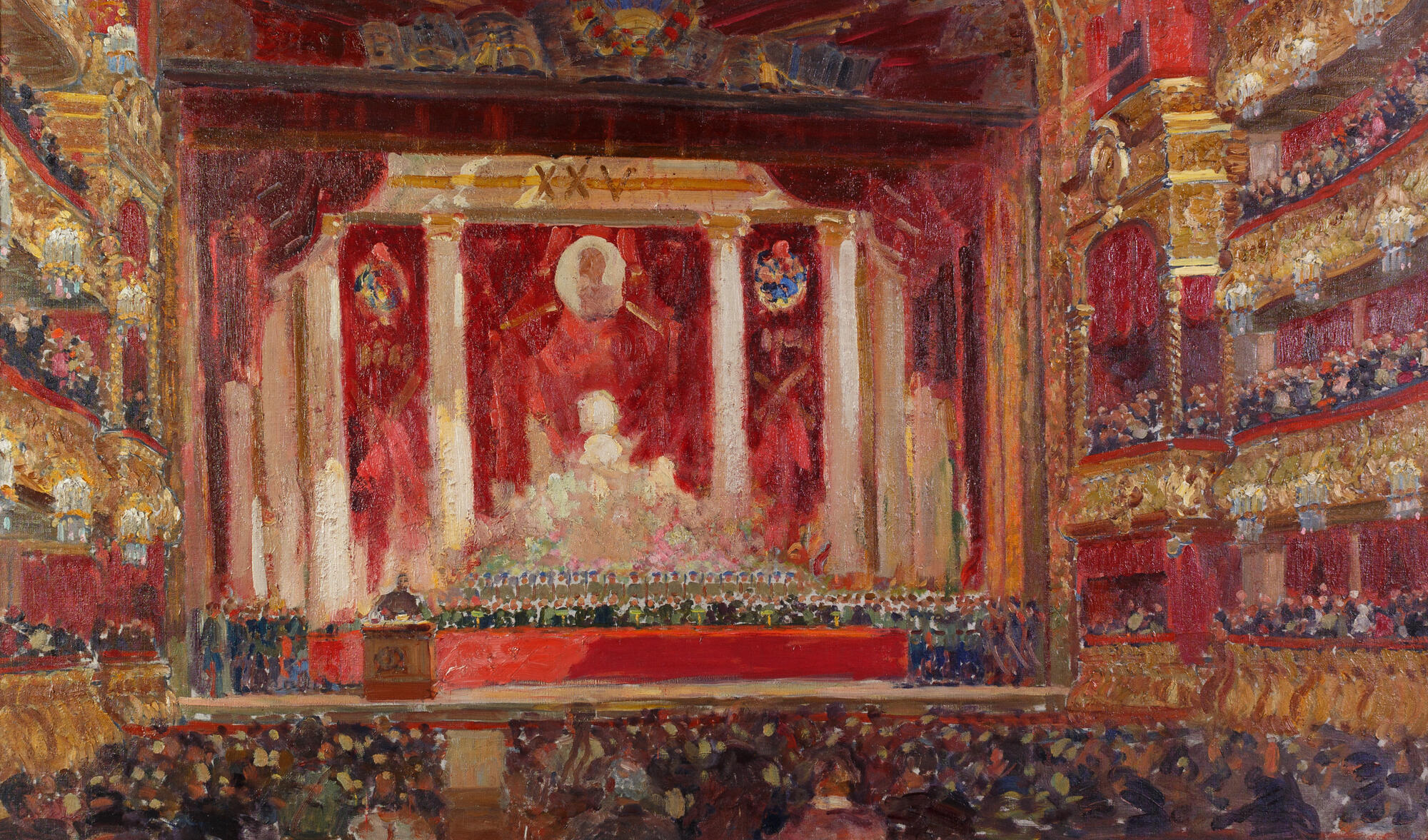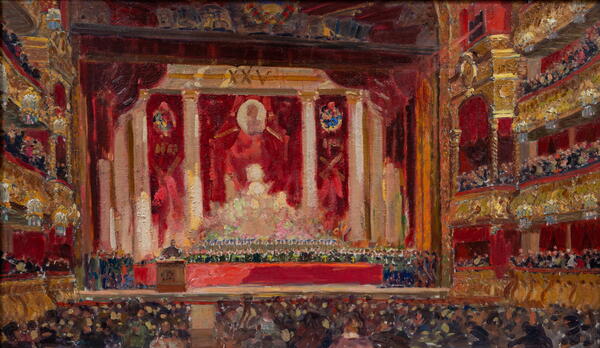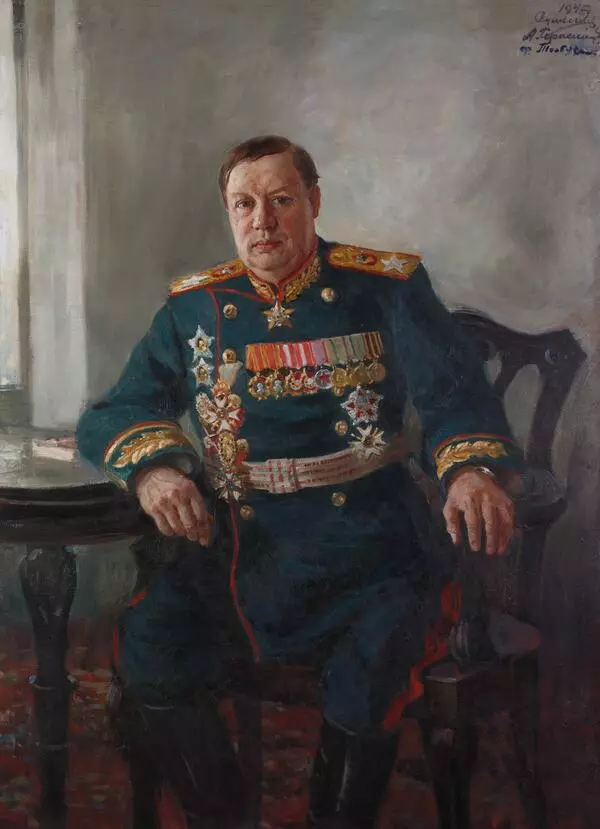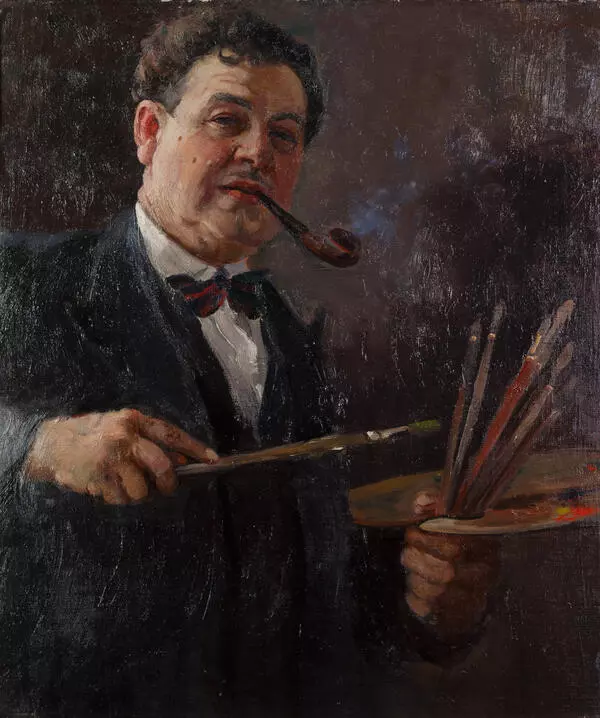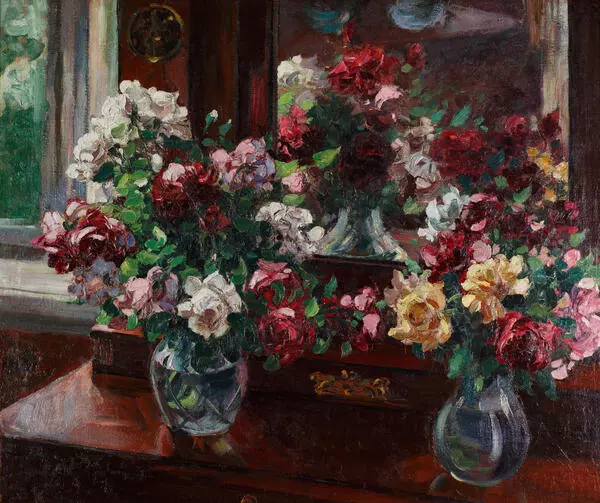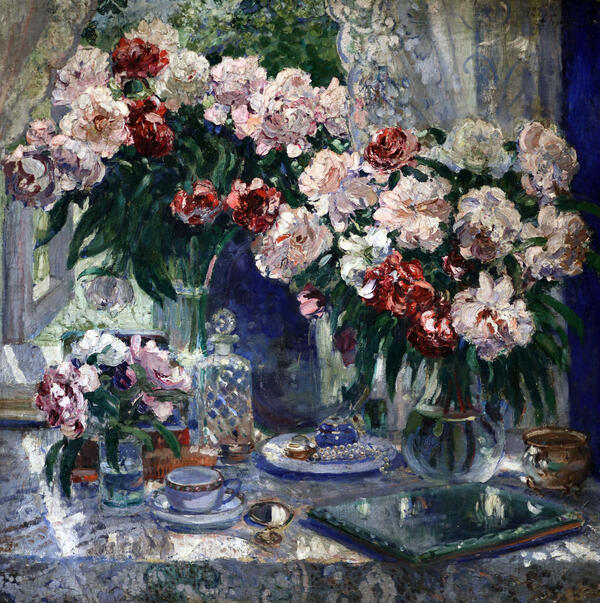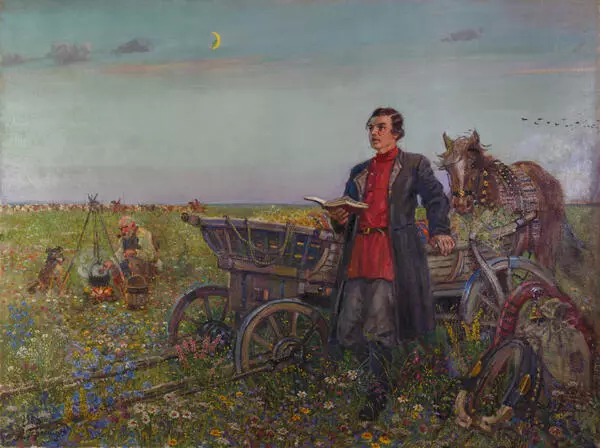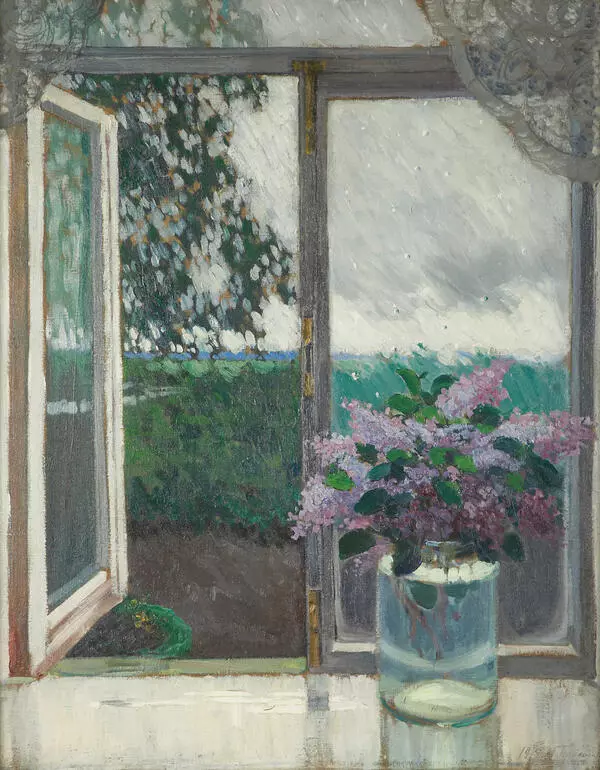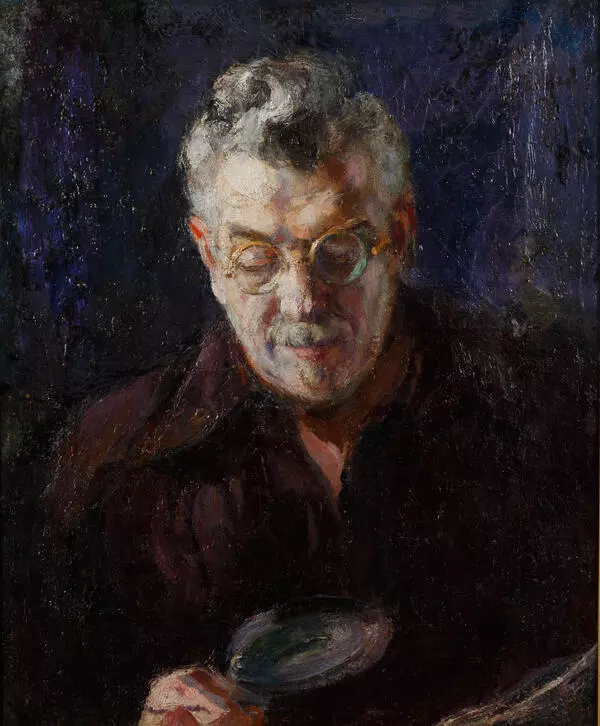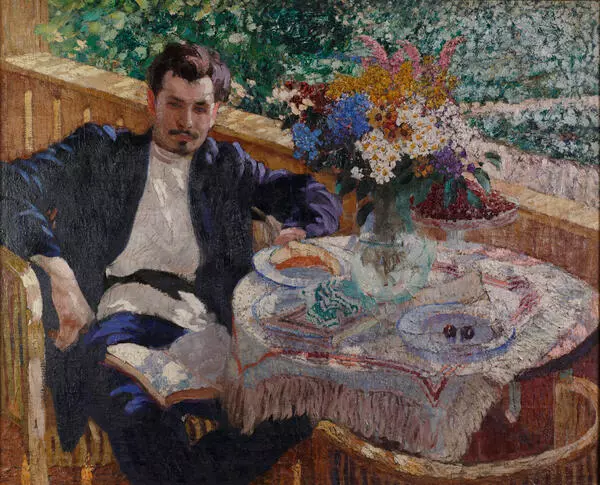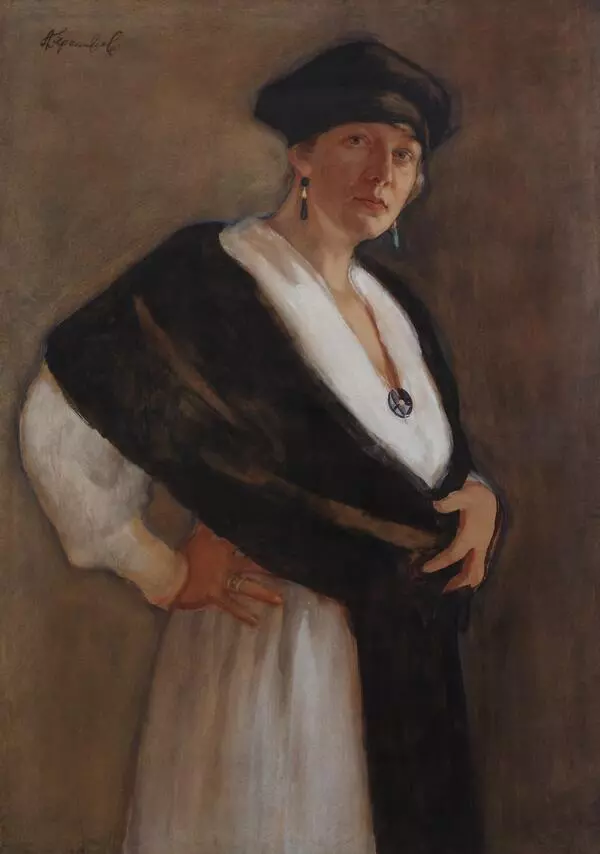It was during the Great Patriotic War. In the autumn of 1942, the situation on the fronts was critical. In Stalingrad, the Germans broke through to the banks of the Volga, in the Caucasus they were close to attaining the oil-bearing Caspian regions. The counteroffensive of the Red Army near Stalingrad would only begin on November 19, 1942. It was in such serious conditions that the country celebrated the 25th anniversary of the October Revolution of 1917. The Government decided to hold an official meeting to commemorate the anniversary. Alexander Mikhailovich Gerasimov proceeded to create a monumental painting to depict the event entitled “Hymn to October”, on which he worked from November 1942 to April 1943.
There are two sketches, the more elaborate of which is now kept in a private collection in the UK. The initial sketch on display at the estate museum is the basis of the future composition of the painting. The focus of the viewer’s attention is on the stage and theater boxes. Here, the artist outlines the general color tonality that will be important in the main work. The scale of the final canvas is striking — 4 by 7 meters. The painting features nearly 200 expressive portraits of the country’s famous people of the time: leaders of the party and government, prominent figures of culture and art, and representatives of the Moscow public. They all gathered for a grand celebration of the 25th anniversary of the October Revolution.
The work “Hymn to October” earned Alexander Gerasimov his second Stalin Prize. Once the picture was finished, a colorful monograph with full-color illustrations was published, in which an entire chapter was dedicated to the work; the Iskusstvo Publishing House issued a mass-circulation brochure. However, none of the later editions included a replication of the painting, or indeed any reference to the same. It remained “invisible” until half a century later when the State Russian Museum demonstrated the painting at an exhibition in Kassel (Germany). The reason for the inexplicable disappearance of the work from public sight for 50 years was revealed in 2010, after the publication of the book “The Moscow Kremlin during the Great Patriotic War”. According to the book, there were in fact no celebrations at the Bolshoi Theater, just a low-profile meeting held with “strictest secrecy measures” for a narrow circle of participants in the Grand Kremlin Palace. Alexander Gerasimov was commissioned to capture a widely publicized event that never actually occurred. The artist tackled the task with great skill and inspiration and created yet another standard of the grand style of the era.
There are two sketches, the more elaborate of which is now kept in a private collection in the UK. The initial sketch on display at the estate museum is the basis of the future composition of the painting. The focus of the viewer’s attention is on the stage and theater boxes. Here, the artist outlines the general color tonality that will be important in the main work. The scale of the final canvas is striking — 4 by 7 meters. The painting features nearly 200 expressive portraits of the country’s famous people of the time: leaders of the party and government, prominent figures of culture and art, and representatives of the Moscow public. They all gathered for a grand celebration of the 25th anniversary of the October Revolution.
The work “Hymn to October” earned Alexander Gerasimov his second Stalin Prize. Once the picture was finished, a colorful monograph with full-color illustrations was published, in which an entire chapter was dedicated to the work; the Iskusstvo Publishing House issued a mass-circulation brochure. However, none of the later editions included a replication of the painting, or indeed any reference to the same. It remained “invisible” until half a century later when the State Russian Museum demonstrated the painting at an exhibition in Kassel (Germany). The reason for the inexplicable disappearance of the work from public sight for 50 years was revealed in 2010, after the publication of the book “The Moscow Kremlin during the Great Patriotic War”. According to the book, there were in fact no celebrations at the Bolshoi Theater, just a low-profile meeting held with “strictest secrecy measures” for a narrow circle of participants in the Grand Kremlin Palace. Alexander Gerasimov was commissioned to capture a widely publicized event that never actually occurred. The artist tackled the task with great skill and inspiration and created yet another standard of the grand style of the era.
